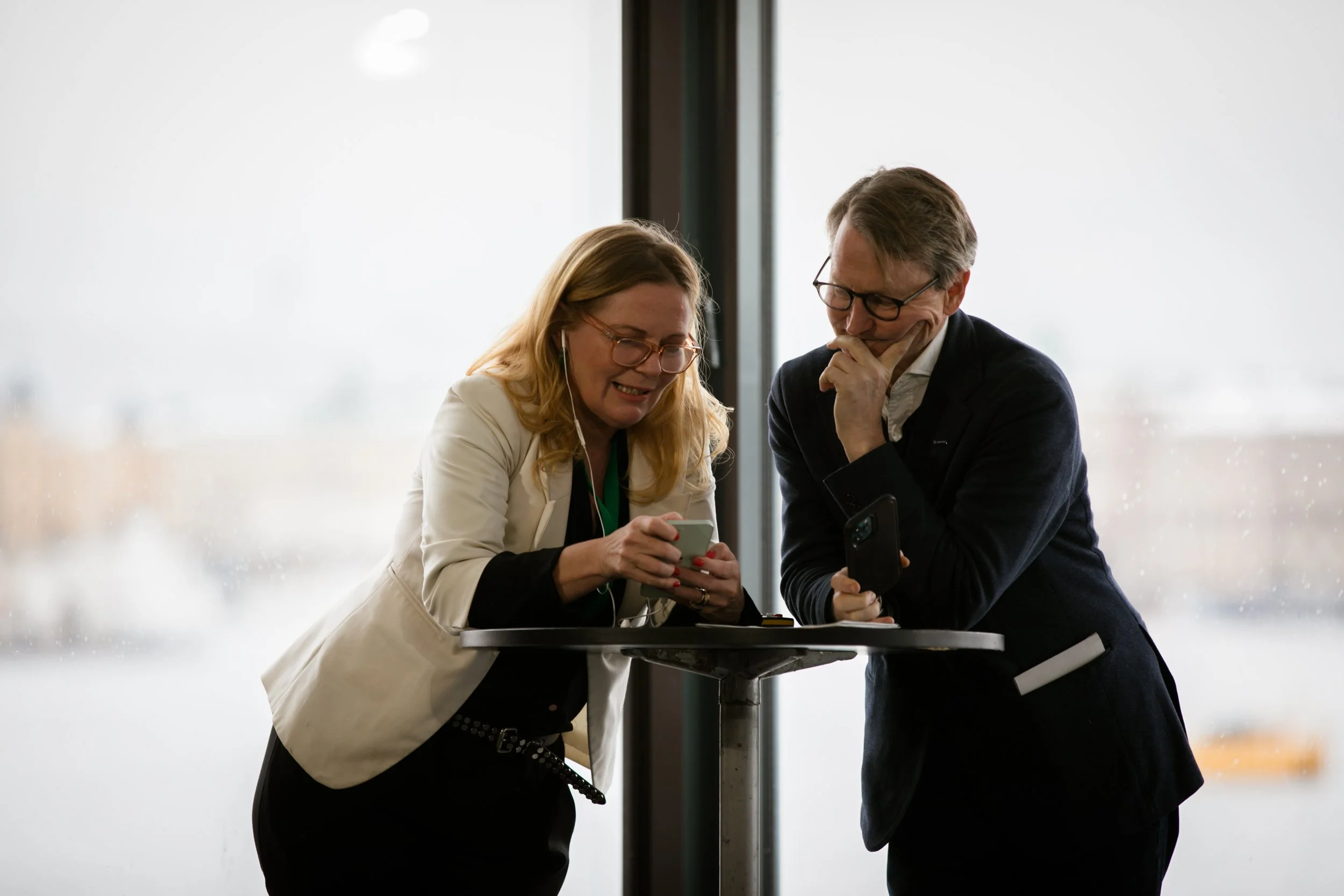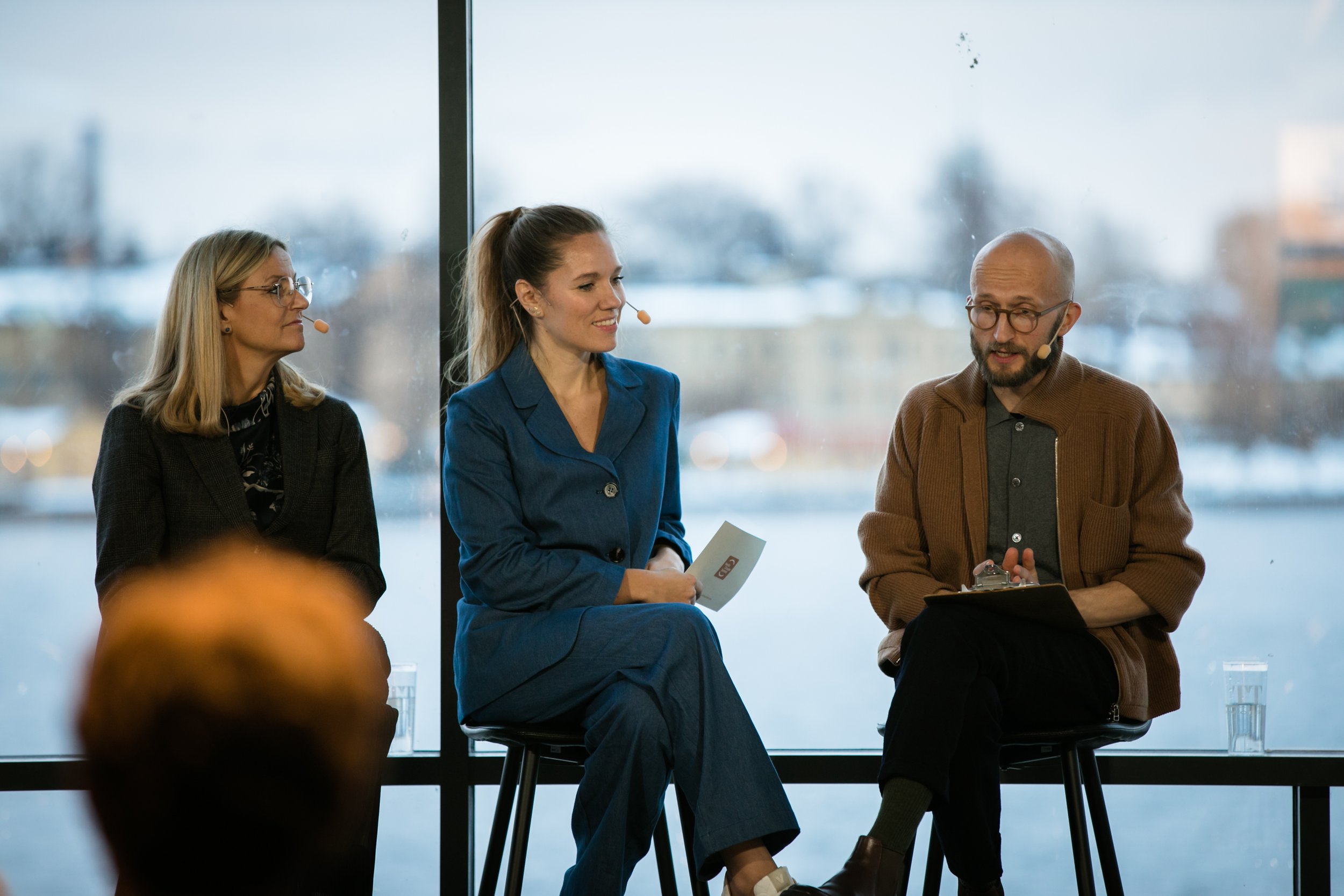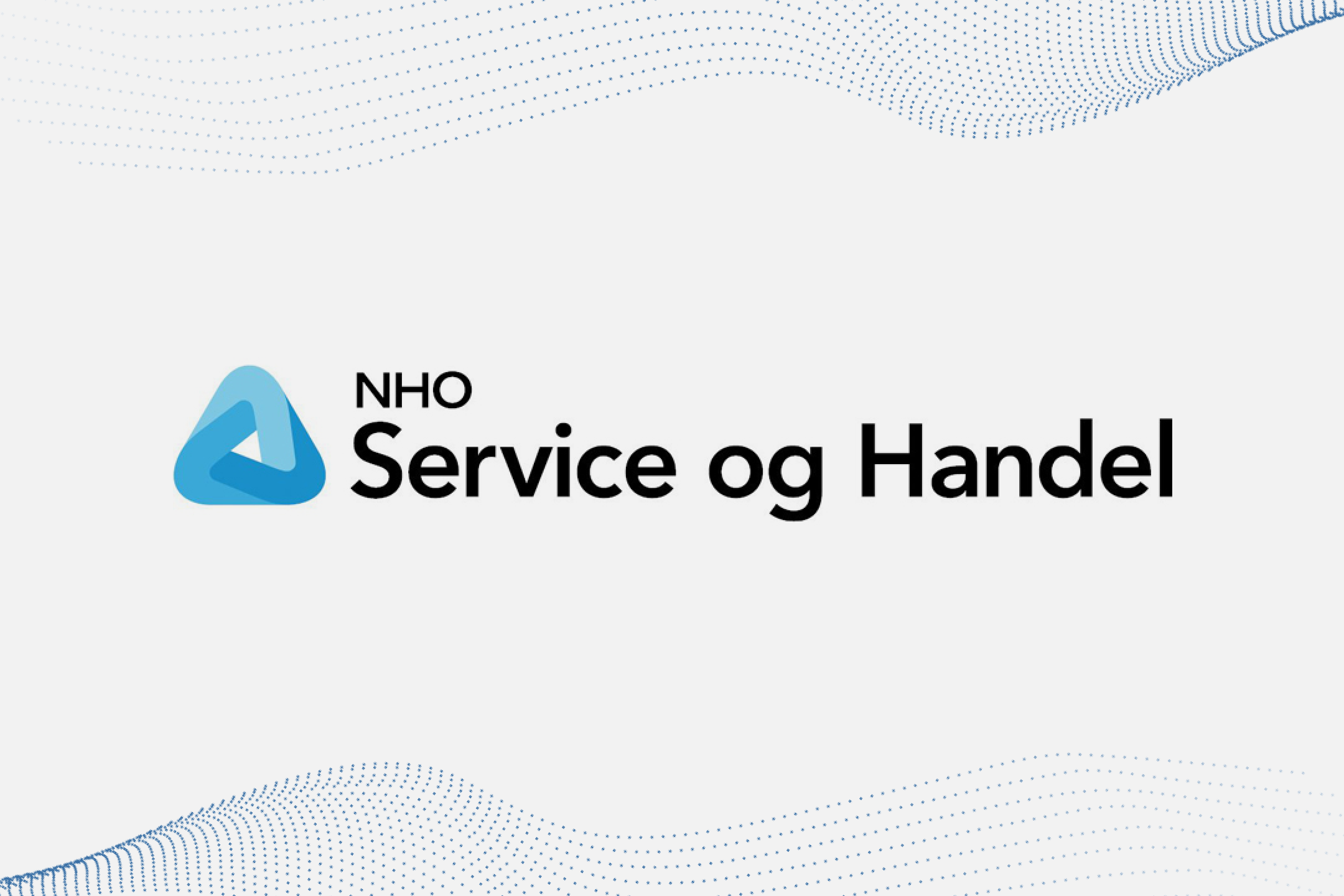Nordic Circular Summit 2022 gathered a record audience
The interest to find inspiration, discuss and share experiences on the circular transition is greater than ever. Nordic Circular Summit 2022 in Stockholm gathered no less than 170 speakers, approximately 650 physical and over 2700 digital visitors over three days.
“We (the Nordic countries) are sitting on a bus to Circular city. But it moves slowly, far from the necessary cruising speed, and, after a while, we can see that the bus has barely left the station.”
This metaphor for the progress of the circular economy is made by Marcus Linder, Director of Sustainable Business at the research institute RISE. He was one of around 170 speakers who took part in the over thirty sessions that made the Nordic Circular Summit 2022, which took place in a former ferry terminal at Stadsgården in Stockholm during a few snowy days at the end of November.
"But if this is compared to the popularisation of the internet during which only 5% of Nordic households were connected in 1995. After that, the rest happened quickly," says Marcus Linder.
How circular are the Nordic countries?
To estimate how far the Nordic countries have come on the circular journey, he has used Circularity Gap Reports, which show that Sweden is 3% circular, Norway is 2% and Iceland is 8.5%, as well as data from Eurostat on circular material use.
"In the latter, Denmark is at 8%, Sweden at 7% and Finland at 6%. If we instead look at how much raw material is traded in the Nordic countries, this amounts to 25 tonnes per year per person, which can be compared to the average of 14 tonnes in the EU."
It is difficult to assess the speed of the bus, he says, but makes a rough estimate using the EU's so-called Eco Innovation Index.
"According to this index, the Nordic countries are at the very top. And that is positive because the circular transition is about innovation."
The third and final question that Marcus Linder asks himself and the world is how the speed of the bus can be changed. He points out the importance of clear resource allocations to support circular strategies, as happens, for example, in Finland but also taxes on activities with negative environmental impacts. The latter was also something that was central to the presentation of Walter R. Stahel, Founder and Director of the Product-Life Institute in Geneva and one of the conference's keynote speakers.
"It is also interesting to consider what the formation of public opinion around the issue of a more resource-efficient society looks like. In the 1990s, when the Internet spread, there were visionaries in suits and eye-catching trainers painting a picture of a fantastic future. Today, those who talk about resource use are more focused on risks and threats than opportunities. We see certain investments that are based on optimism, such as what Northvolt has done with Revolt, but we would need many more to speed up the transition," Marcus Linder notes.
Interest for the circular economy is higher than ever
Since 2020, a number of Nordic organisations working in the Nordic Circular Hotspot have organised an annual conference on circularity in the Nordics. The Nordic Circular Hotspot was initiated in June 2019 and is currently operated by 12 Managing Partners from the five Nordic countries. The network and the conference are financially supported by Nordic Innovation.
This year, more participants than ever gathered to share insights, news and discussions on topics such as circular business models, tools, financing, design, procurement, reporting, research, and standardisation and policy-making efforts. Around 650 people were present and many more followed the conference digitally.
The power of cooperation between the Nordic countries which, with a shared population of over 27 million, are the world’s 12th largest economy was something that was highlighted at several points during the three days of the conference.
One of these initiatives is the Nordic Working Group for Circular Economy, which was formed in 2019 and is chaired by Inger Johanne Wiese.
"Waste and recycling play key roles in the circular economy and we must contribute to improving the Nordic countries' work in cross-border transportation. The construction sector in the Nordics is also growing rapidly, which makes the construction and demolition sector another important area for us. Improving the work with product design and communicating products' environmental properties on the market, for example by giving input to EU processes, are also in focus."
The group has also been tasked with following up on some of Norway's former Climate and Environment Minister Tine Sundtoft's recommendations for a greener transition in the Nordic region.
"The demand for green goods and services through public procurement processes is one of the themes that we will take a closer look into."
That the economy of the future needs to be more about real value creation and radically higher resource efficiency was one of the main conclusions during the conference, stated, among others, by Andrea Liverani from the World Bank and Walter R. Stahel.
Rapidly increasing anthropogenic mass is endangering humanity
Walter R. Stahel began by pointing out that the elephant in the room is the rapidly increasing anthropogenic mass—that being the amount of products and materials that we humans have created. In 2020, the anthropogenic mass passed the combined weight of the entire Earth's biomass at 1.1 teratonnes.
"That the anthropogenic mass is replacing the biomass endangers all of humanity."
He believes that the circular economy is the answer to this challenge, but can also tackle two other obstacles, out of a total of six, on the way to a sustainable and resilient society.
"The other two are synthetic materials in the environment, i.e. waste, and global climate change, i.e. emissions."
Walter R. Stahel points out that the circular economy belongs to and is part of a new trend of intelligent decentralisation. He gives an example of local micro-facilities for energy production from geothermal to solar power, 3D manufacturing, locally produced pharmaceuticals based on need, microbreweries and urban cultivation.
During the third day of the conference, the focus turned to regenerative ventures. Minimising waste and radically improving resource efficiency for natural resources such as food, wood and fibres will not be enough. We must also strengthen and grow nature's capacity and resilience, the presenters said.
"Companies must also contribute to this," says Nancy Bocken, Professor of Sustainable Business at Maastricht University and a Visiting Professor at the International Institute for Industrial Environmental Economics at Lund University, pointing at IKEA which buys forests to protect them. In 2020, Inter Ikea Group launched an investment of 200 million euros to accelerate the transformation to become climate positive. A significant part of this investment is used to reduce the amount of carbon dioxide in the atmosphere through reforestation, restoration of degraded forests and better forestry practices.
Moving towards a regenerative market
The term regenerative is new and, in the same way as when the term circular economy was first introduced, there are still many interpretations and a lack of clarity. Taking part in the discussion at the Nordic Circular Summit 2022 was, in addition to Nancy Bocken, also author Ken Webster, who, among other things, wrote the book The Circular Economy — A wealth of flows. Organisations, such as the Dutch Circle Economy, and companies, such as the Swedish Houdini, also participated in the discussions.
Kari Herlevi, Project Manager for Global collaboration for sustainability solutions at Sitra, Finland's equivalent for Vinnova, gave his perspective on policy support for a regenerative Nordic market and highlighted the report they launched last spring, Tackling root causes — Halting biodiversity loss through the circular economy.
"It is unique in its attempt to expand the discussion from technical material flows to the use of biological materials," says Kari Herlevi.
"By focusing on circular solutions in four sectors, the global loss of biodiversity can be stopped or even reversed by 2035," says Kari Herlevi. The first sector is food and agriculture. Here, reducing pollution, food waste and waste along the entire value chain can increase efficiency and reduce the need for input materials, especially when it comes to proteins, while regenerative agriculture positively affects biodiversity. The forest is the next area where longer lifecycles and the reuse of products reduce the need for wood raw materials. And that new raw material needs to be taken from forests that are used in a regenerative way. For the construction sector, this is about extending the lifetime of buildings, optimising their use, reducing material consumption, and reusing and recycling materials while increasing the proportion of renewable materials. The fourth sector is fibre and textiles. The demand for new materials is reduced through increased durability, longer use, reuse and recycling of clothes, while regenerative methods are used to grow new raw materials.
"In Finland, the value created by the bioeconomy, primarily through the production of forest products, has stagnated. Going forward, this must change and the material that is harvested must create more value," notes Kari Herlevi.
Biomimicry looks at nature for solutions
Dependence on the services of nature and the ecosystem was highlighted by, among others, Anna Maria Orrù, an architect with a focus on biomimicry.
"Biomimicry is about asking the question of how nature would solve a challenge, and its aim is to design in a way that recreates and strengthens living systems. It is one of the main methods for companies to seriously move towards a regenerative circular economy."
After three fully-packed and intensive days that discussed everything from lessons learned from today's crises, the state of the circular transition in the Nordics and new regenerative markets and during which many brave and fantastic companies got to share inspiration, it was time to finish. Next year, in 2023, the Nordic Circular Summit will be held in Reykjavik.
Written by Jill Bederoff and Jan Agri
All of the Summit sessions were recorded and are available to watch here.
















